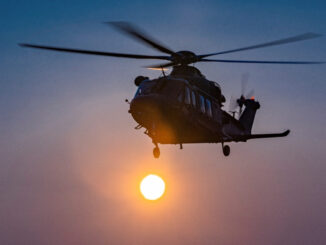 Beechcraft D17S Staggerwing (c/n 4896, N69H), static display at spotter day organized on the eve of 100th Anniversary of the German Naval Aviation (Marineflieger), Nordholz air base, August 2013.
Beechcraft D17S Staggerwing (c/n 4896, N69H), static display at spotter day organized on the eve of 100th Anniversary of the German Naval Aviation (Marineflieger), Nordholz air base, August 2013.
The aircraft, officially designated Model 17, was the first development of Beech Aircraft Company, founded by Walter Beech in Wichita, Kansas, in 1932.
Walter Beech began his aviation career at the age fourteen, when he built and then flew a glider of his own design. During the Great War, he flew for the US Army, then became a test pilot for Swallow Airplane Company. In 1924, together with Lloyd Stearman and Clyde Cessna, he founded Travel Air Manufacturing Company that shortly thereafter was purchased by Curtiss-Wright, with Walter Beech taking over the position of vice-president.
In 1932, Walter Beech decided to leave Curtiss-Wright and establish his own aviation enterprise. Together with his wife Olive Ann and investor C.G. Yankey, he created Beech Aircraft Company, taking over the former Cessna facilities in Wichita. What´s more, Beech asked Ted Wells, a talented aircraft engineer working for Curtiss-Wright, to join his new company and then appointed Wells the lead designer at BAC.
At that time, Theodore Arthur Wells have already had a noticeable aviation experience. He was an air race pilot, cross country navigation races, was a display pilot and design engineer at Travel Air – where he cooperated on development of Model 12 and Model 16 aeroplanes.
In 1931, at the time the Travel Air company already was a division of Curtiss-Wright, Wells began to work on his own design, Model 17. It was a four-seat biplane with enclosed cockpit that featured an unconventional, negative wing stagger. Unlike the other biplanes of the era, the Model 17 had its lower wing moved slightly forward than the upper one, in order to improve visibility from the cabin and reduce interference drag between the wings.
The project was enthusiastically received by Walter Beech but then rejected by the Curtiss-Wright management that did not share Beech´s ardour. Eventually, the Model 17 was one of the reasons Beech left the company and decided to fund his entirely own business.
The Beechcraft Model 17 became the first development of the newly established company. Prototype of the aircraft made it first flight on 4th November 1932. Next year, the Model 17 was introduced to the market.
Initially, the aeroplane failed to meet sales expectations and only eighteen examples found their owners in 1933. The Great Depression had cast a long shadow on the aviation market with not much demand for an expensive, but luxury and custom-made aeroplane the Model 17 was. The first Beechcraft was then recognized as an executive aircraft, an equivalent of modern private business jets.
Therefore, the Model 17 had to build its market position slowly but successively. For the first time the aircraft attracted wider attention by winning the 1933 Texaco Trophy Race. In 1935, the Staggerwing – as the aeroplane was commonly nicknamed – successfully flew around the world, piloted by Capt. H.L. Farquhar. Next year, the Model 17 flown by Louise Thaden and Blanche Noyes won the Bendix Trophy. In 1937, Jackie Cochran and her Staggerwing set a women flight speed record of 328.14 kph (203.9 mph) at an altitude of 30,000 ft.
Such achievements significantly increased the sales and more than 420 examples of the Model 17 in six main variants, representing subsequent stages of its development, were sold until the outbreak of World War II.
A few versions of the Model 17 were also used for military purposes. Some aeroplanes were in service with the Spanish Republican Air Force and China operated them as air ambulance. The US Army Air Corps and US Army Air Forces used modified variants of the aircraft, known as UC-43 Traveler and YC-43, for liaison purposes. In addition, the Model 17 entered service with the US Navy (as GB-1 and GB-2) and with the Royal Air Force and the Royal Navy (as Traveller Mk I).
After the World War II, the Beechcraft company re-launched production of civil variants of the Model 17. Nevertheless, faced with reality of the post war aviation market and excessive number of surplus aeroplanes, only sixteen examples of the Staggerwing were completed. In 1947, the Model 17 was succeeded by new and much modern design – Beech Model 35 Bonanza.
Nevertheless, the Staggerwing did not vanished from the skies. Several aircraft survived until today in airworthy condition being among the most demanded vintage aeroplanes. In 2003, the Model 17 was one of the aircraft mentioned in Top Ten All-Time Favorites by the Plane and Pilot Magazine. According to the editors of the magazine, Staggerwing was chosen for ´cabin comfort, remarkable speed and pure flying pleasure, all in a single package´. And, certainly, for its attractive and beautiful design of truly classic aircraft.



